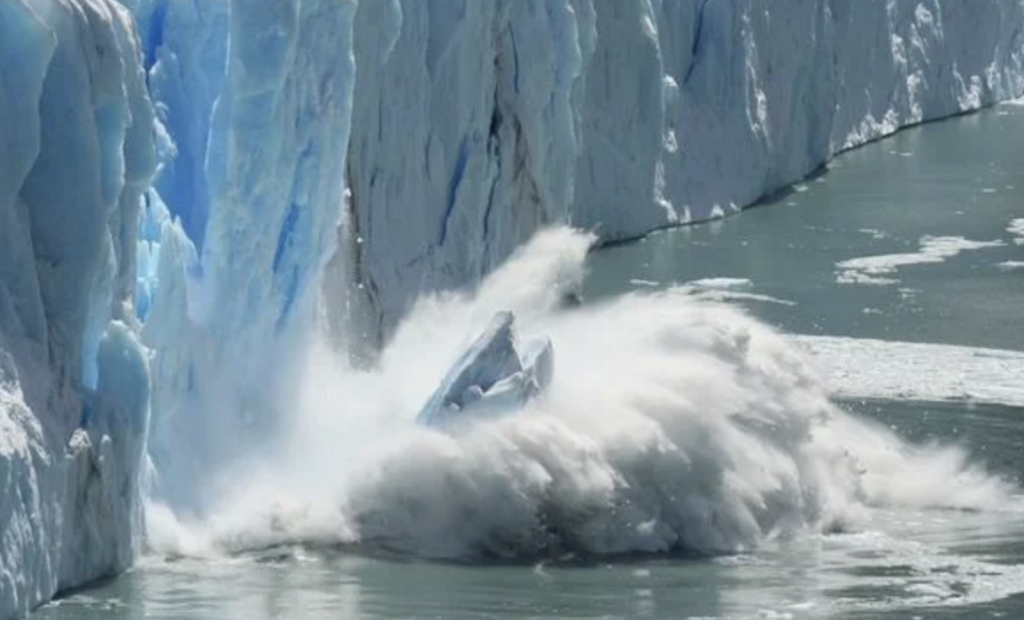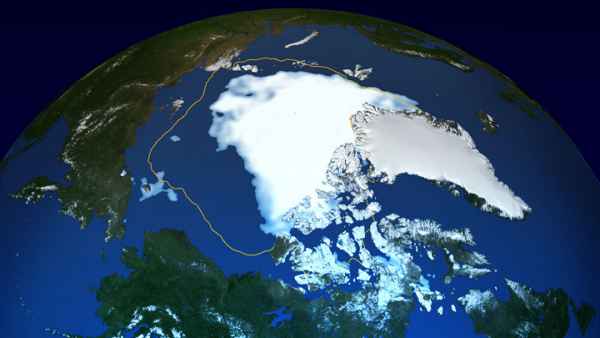Scientists are warning that there could be a large reduction in Arctic ice over the next ten years, since the ice is in serious peril. The Antarctic saw its smallest maximum ice coverage ever recorded, while the Arctic saw its sixth-lowest minimum ice extent on record, according to recent data from NASA’s satellite measurements. It appears that this concerning tendency, which has persisted for years, is growing worse.

There has been a consistent decline in Arctic sea ice since NASA began tracking it in 1978. Furthermore, forecasts indicate that if this pattern persists, the Arctic may see no ice in September by the 2020s or 2030s. However, what does “ice-free” actually mean? It refers to fewer than a million square kilometers of covered ice, not an absolute lack of ice.
The Arctic sea ice covered an enormous 1.63 million square miles or 4.23 million square kilometers even with the smallest ice extent recorded in 2023. Regardless of various emission scenarios, it is projected that the Arctic’s summer ice might decrease to roughly 24% of its 2023 size by the 2030s.
According to scientific predictions, this drop will continue, and by 2067, August and October will also see an increase in the frequency of ice-free conditions in the Arctic, in addition to September. But there’s still hope. This milestone may be postponed if greenhouse gas emissions are reduced. Since changes in carbon emissions have a significant impact on the melting of Arctic ice, lowering these emissions may help avoid protracted ice-free stretches.
The substantial effects of these modifications are highlighted by a study that was published in Nature Reviews Earth & Environment. The primary author, Alexandra Jahn, an associate professor at the Institute of Arctic and Alpine Research at CU Boulder, highlights the critical nature of emission reduction initiatives. Reducing emissions is vital to avoid extended ice-free periods, even in the face of unavoidable ice-free conditions.
These estimates highlight the serious ramifications, particularly for species that depends on sea ice, and are based on thorough studies that integrate several study findings. For example, polar bears are facing more difficulties as their habitat gets smaller. The melting Arctic ice creates new shipping lanes that might be advantageous to business ventures, but it also poses difficulties for marine animals like blue whales.
Furthermore, by lessening the earth’s albedo impact, the melting Arctic ice contributes to an increase in global warming. Less ice cover means less reflective surface to reflect sunlight back into space, which speeds up melting and increases the amount of heat absorbed by the ocean. This feedback loop feeds back into the cycle of warming and melting, increasing the frequency and intensity of heatwaves.
There is hope that the Arctic will be able to adapt to climate change despite these concerning projections. If emissions are decreased, Arctic sea ice can rebuild rather fast, in contrast to long-term geological processes like glacier building. This emphasizes how urgent effort is needed to slow down climate change and save the fragile natural balance of the Arctic. It is time to take action.


